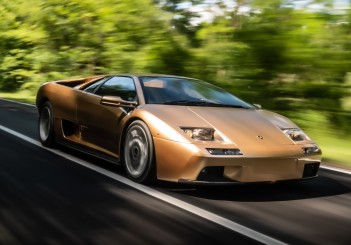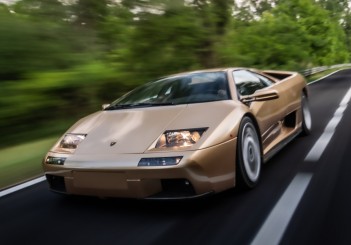The Diablo is considered to be one of the most iconic models in the history of super sports cars which rumbled into market in January 1990.
The Diablo story began in 1985 (codenamed Project 132) with the aim of replacing its flagship Countach.

The clean and aggressive lines are the result of a project by Marcello Gandini that was partially revised by Chrysler's design centre, which in the meantime became the majority shareholder of the Italian supercar builder.
The Diablo managed to win the hearts and appreciation of fans since officially making its debut and was officially the fastest production car in the world at that time with a top speed of 325kph.
Its dynamic behaviour was the result of intense development work involving the rally champion Sandro Munari.

Power came from a longitudinal rear-mounted 5.7-litre V12 with four overhead camshafts and four valves per cylinder, equipped with multi-point electronic injection - all of which contributed to a rated output of 485hp and 580Nm of torque.
The twist was sent to the rear wheels and no electronic driving aids or power steering was made available until 1993.
The cabin featured luxury details that included leather, air conditioning, powered windows and power-adjustable seats
In 1993, the company launched the Diablo VT - the first Lamborghini Granturismo (GT) to be equipped with four-wheel drive, which also brought a series of mechanical improvements and stylistic changes also to be soon adopted on the rear-wheel-drive version.

In the same year, the special SE30 series was presented to commemorate 30 years since the birth of the company, with a power increase to 523hp.
In 1995, the Diablo SV made its debut at the Geneva Motor Show wand was made available only as a two-wheel drive version with 510hp and an adjustable rear wing.
In December, the Diablo VT Roadster came to light to mark Lamborghini's first mass-produced V12-powered vehicle with an open-roof, mass-produced Lamborghini, with slightly revised lines and offered with the four-wheel-drive transmission only.
By 1999, following the purchase of Automobili Lamborghini by the Audi Group, there was the unveiling of the Diablo SV "restyling" designed by Luc Donckerwolke, Lamborghini's first in-house designer.

It followed the VT and VT Roadster: all three models evoked clear signs of modernization through its revised lines and interior.
From a mechanical point of view, the engine - now with 529hp and 605Nm, was equipped with the variable valve lift system and, for the first time on a Lamborghini, the brakes were completed by ABS.
The Diablo, also launched in special series or for competition with 6.0-litre engines, was Lamborghini’s "most produced" car to date with 2,903 units in total and remained available until 2001 when it was succeeded by the Murciélago.



























